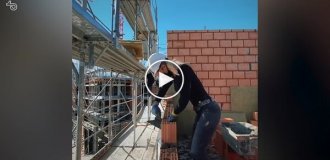Why Romanians dress up in bear skins and dance in the streets (7 photos + 1 video)
Or how Ursul's bear festival goes. 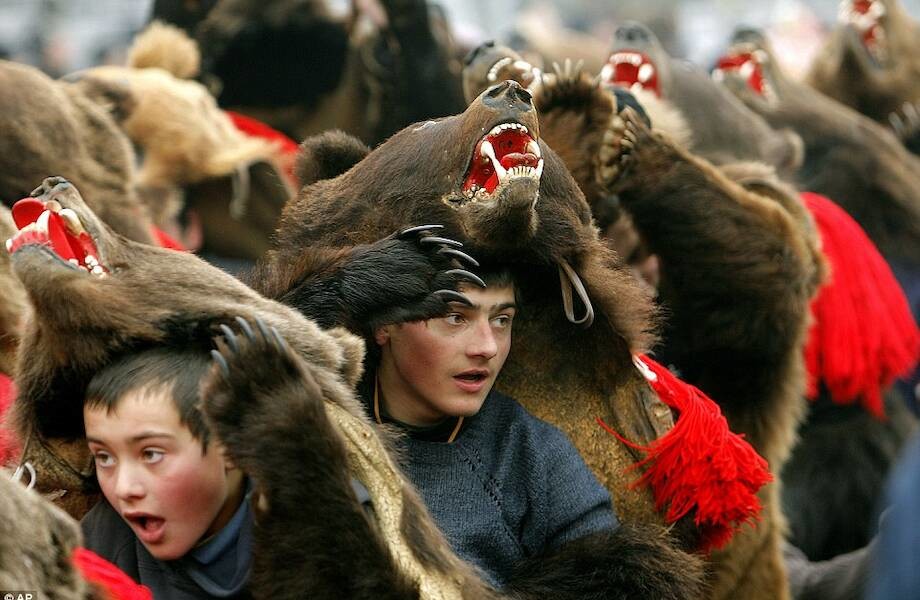
Every December in many towns and villages in Romania people put on real bear skins and dance crazy dances. This is one of the brightest and most unusual Romanian traditions, which goes back to pre-Christian times. How did this amazing ritual come about?
Dacian people who lived in what is now Romania and Moldova, considered the bear a sacred animal. People have noticed that the life cycle of clubfoot coincides with the natural one: in winter, bears fall into hibernation, and wake up in the spring, along with all nature. Romanians believed in the fact that bears have healing properties, and even their own they lubricated newborns with bear fat, believing that this would give children good luck and good health. 
However, bear fat wasn't the only way to protect yourself. from evil and everything bad. Before the onset of the next year in the village they drove real bears that danced to the music. It was believed that such dances at the end of the outgoing year help to scare away evil spirits. Gypsies usually drove bears: they passed on the ability to train clubfoot to their descendants. 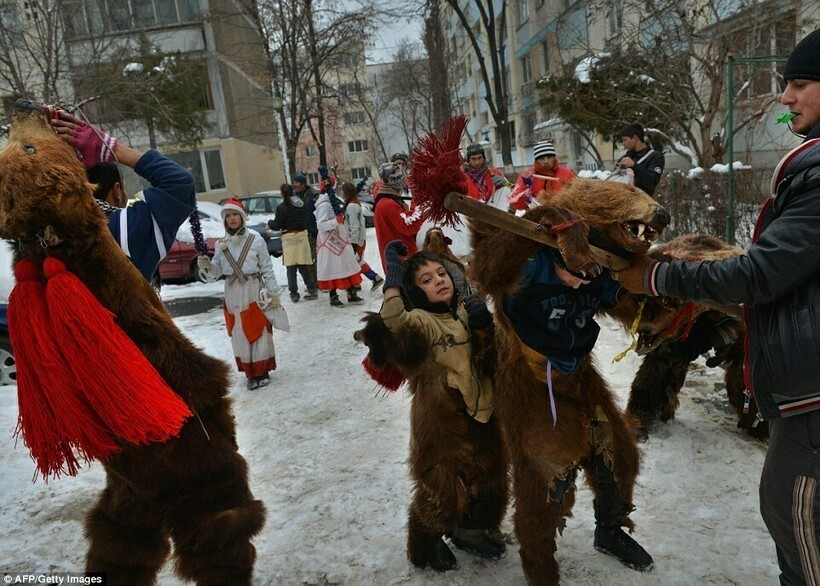
Over time, the tradition began to change, bears began to be driven less often. along the streets of towns and villages. However, the tradition has not disappeared, and changed: before the New Year, non-living bears began to expel spirits, and people in bearskins. In this form, the ritual has come down to our days. 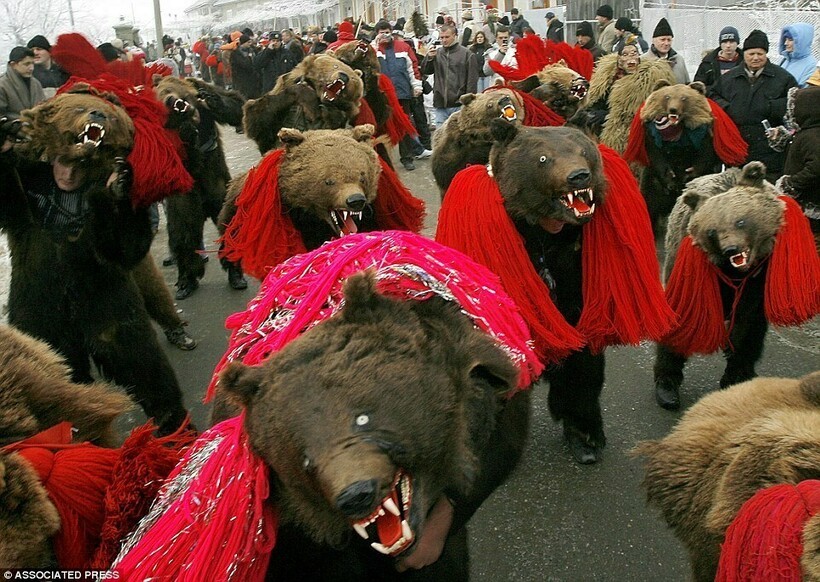
The holiday was called Ursul: the word
urs
from Romanian Literally translated as "bear". Getting ready for the festival several months, learn dances, put in order the skins of bears and other outfits. 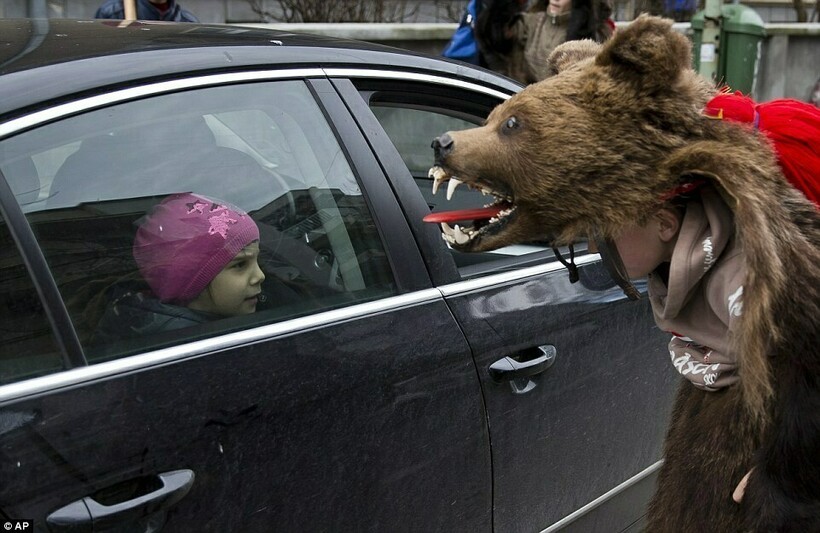
Traditionally, the procession includes more than twenty bears, they are accompanied by tamers in red outfits, girls in traditional costumes and children who sing something like carols.
Moving in the skin of a bear is not so easy, because such an old the costume (many more than half a century old) weighs more than fifty kilograms. You almost always need to move on a lean to make the bear look ferocious. If a person stands up straight, then the bear's head will be turned to the sky. 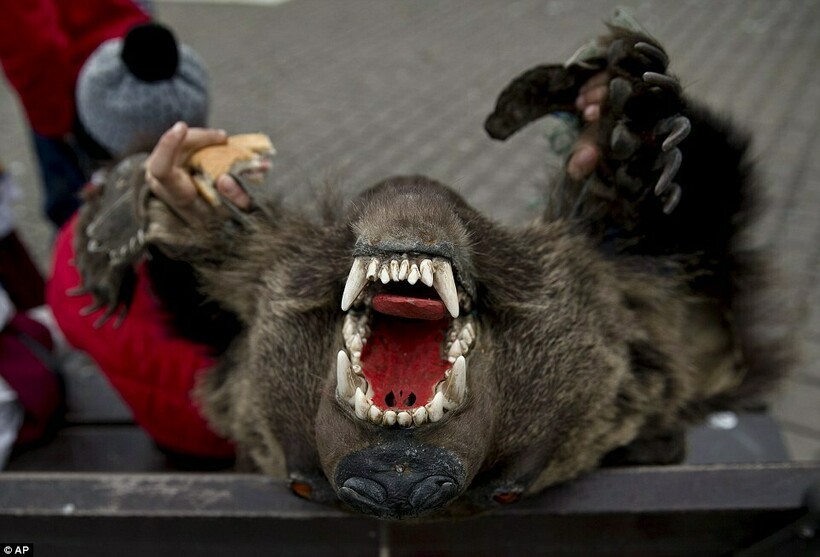
Most often, men or young men dress up in costumes, but there are also women among the dancers.
Festival participants move to the rhythmic music of drums and flutes, dancing in the same way. The tamer manages the ceremony: he is choreographer and director who choreographs the bear dance. 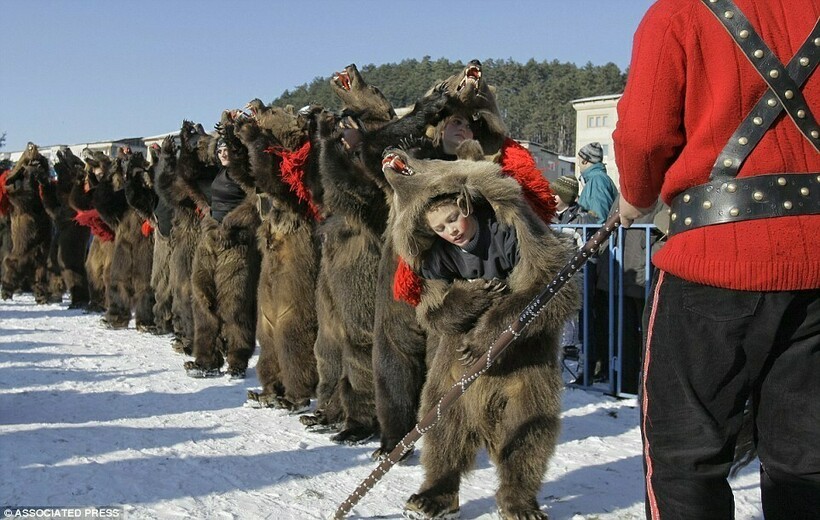
The tamer usually has a whip in his hands, the female participants have sticks in hands. The finale of this action is the death of bears, and then resurrection. The holiday has long been considered a symbol of rebirth and updates: the old year dies to be reborn.
Of course, in modern realities, Ursul has changed a lot. So, Traditionally, dancers had to enter every house, thereby drive away evil spirits from every dwelling. These days Ursul is just a parade that ends in the city center with a festive performance.

